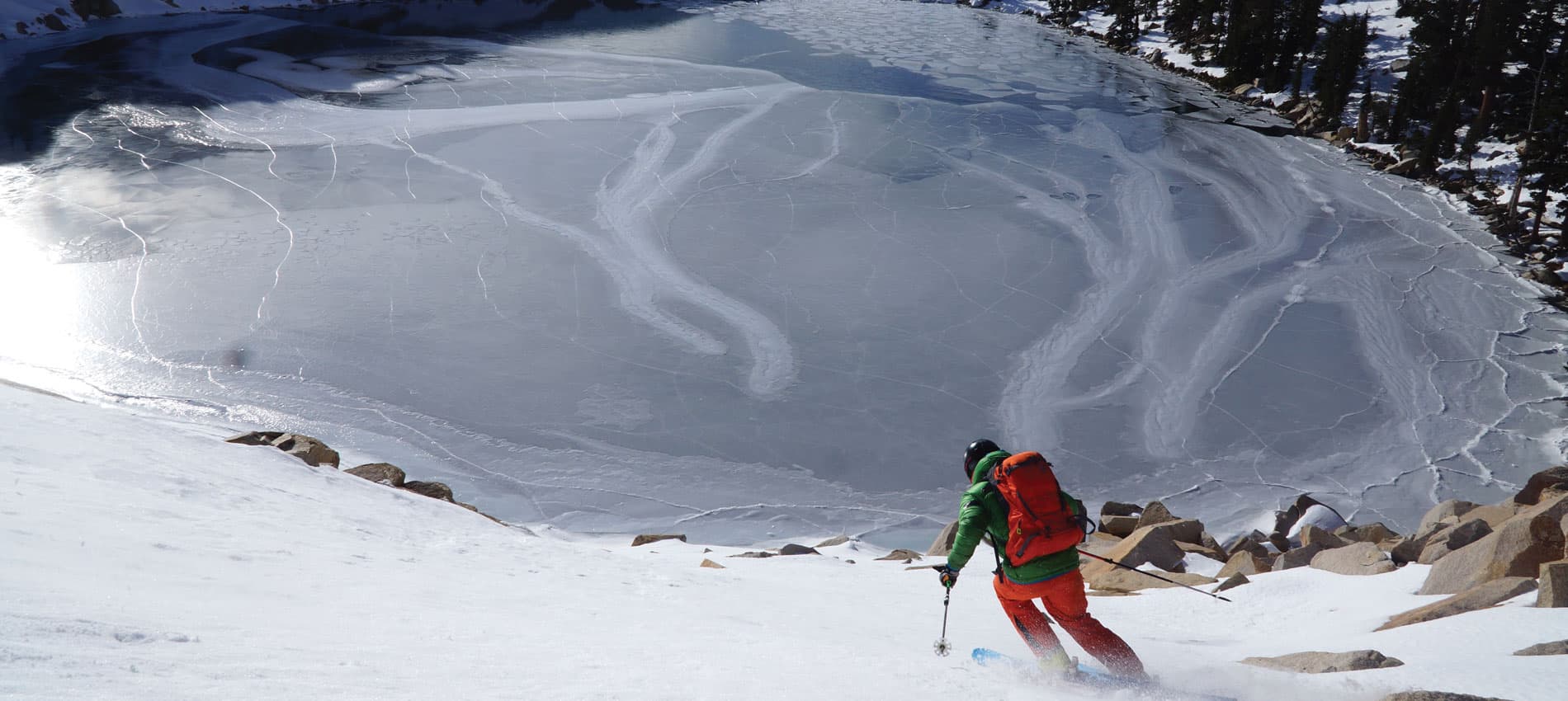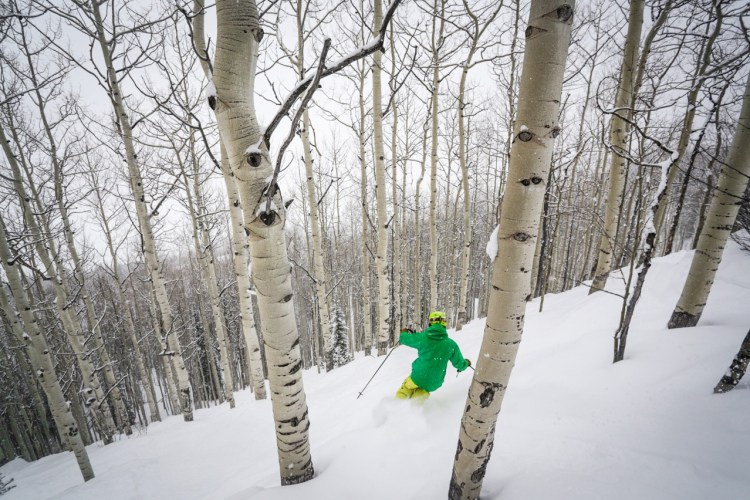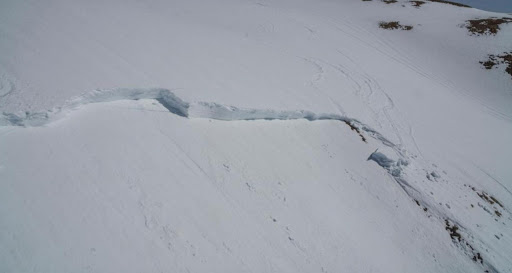
Early season backcountry skiing is fun. Skiing in fall among the turning Aspen trees with untracked blower powder is a treat, but being aware of its dangers is vital to keep in mind.
Trees
Tree skiing is some of the best backcountry skiing, but early season snow coverage poses grave dangers. The shallow snowpack means large shrubs, rocks, or roots may lurk beneath the surface, ready to ruin your skis or, worse, your knees. When tree skiing with a shallow snowpack, assess the snow depth on the skin track up so you can know the depth of the snow covering said dangers.

Rocks
In alpine terrain above treeline, the same dangers apply as in trees. You must be cautious of rocks lurking under the unconsolidated snowpack. Again, a good strategy is to test the snowpack on the way up. Another good strategy for super early season skiing (before there is uniform consistent snow coverage) is to use satellite imagery to your advantage to ensure that you are skiing only above perennial snowfields. Some good resources to do this are the Sentinel Hub Playground or the Sentinel layer on Caltopo.

Avalanches
Like any other time of the year with snow, avalanches are a typical problem in the backcountry. Avalanches, especially in the early season, depend on conditions, so there isn’t any “most common” avalanche in the early season. You can find a great rundown of the nine different avalanche problems and the conditions they correlate with from the CAIC here.
Early season backcountry skiing has a low snowpack and many risks to be aware of. While there are things that can be done to mitigate these risks, the #1 thing you can do to stay safe is to always ski with a partner. Always educate yourself on the snow and weather conditions before going out. This season will see many more backcountry skiers than usual who may not be able to take an official AIARE avalanche course. If this is the case, please educate yourself ahead of time. Some good ways to do this are by reading Bruce Tremper’s Staying Alive in Avalanche Terrain or, at the bare minimum, familiarizing yourself with hazards and mitigation techniques in the backcountry from avalanche.org.

Did you think of that all by yourself?
That’s a super smart comment!
You’re so helpful!
Would much rather be off piste than pisteoff for sure.
but hey at least all the affilliate sponsored ads on this ridiculous site are all about titties titties titties.
Powder fever is dangerous. Experienced ski tourers wait until at least a 40″ snowpack
A core shot is a best case turn out
You might just end your season before it ever starts.